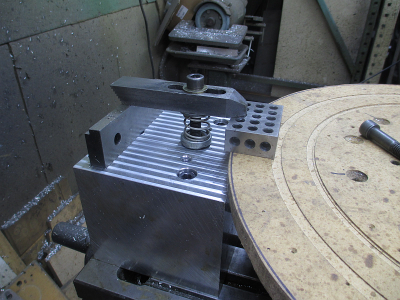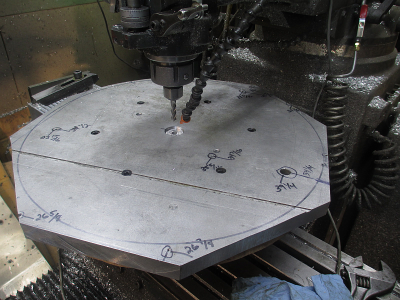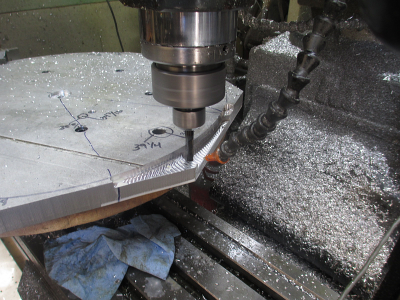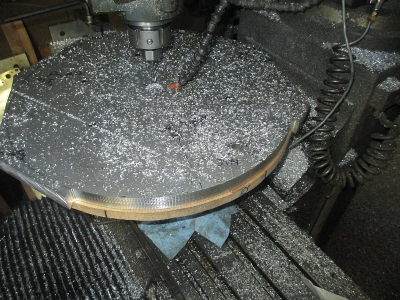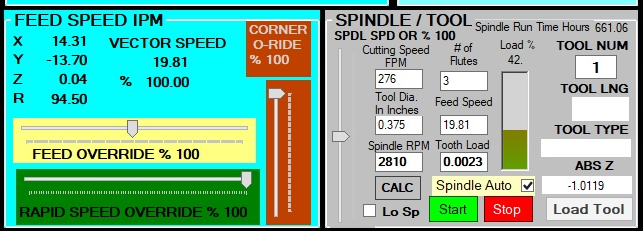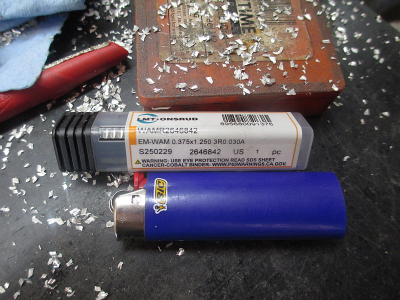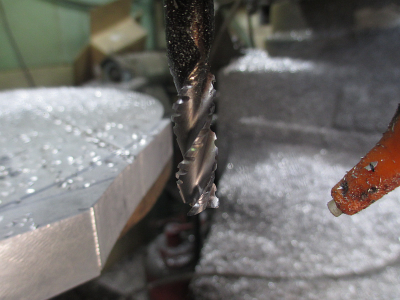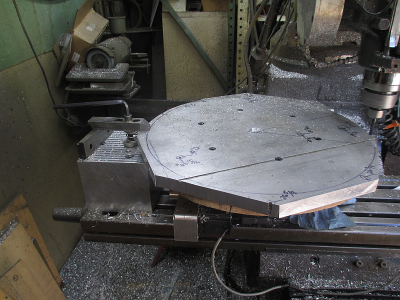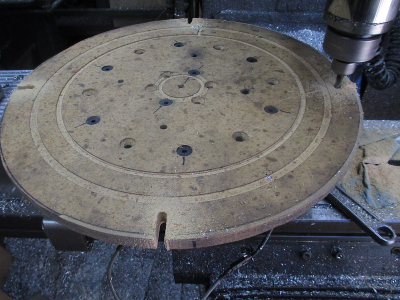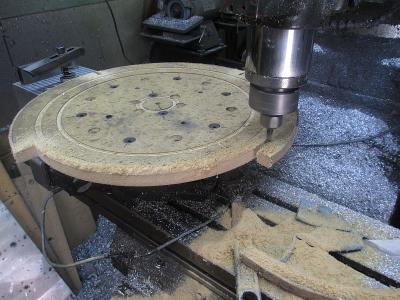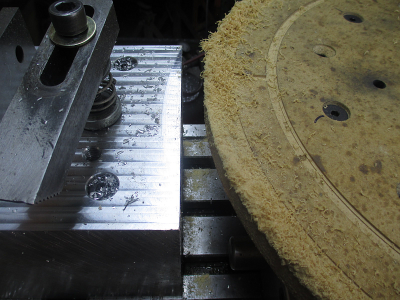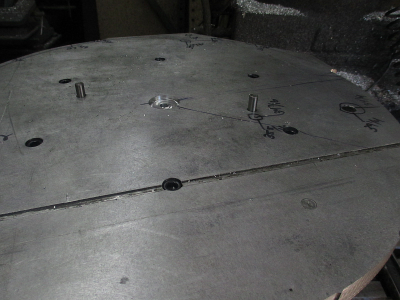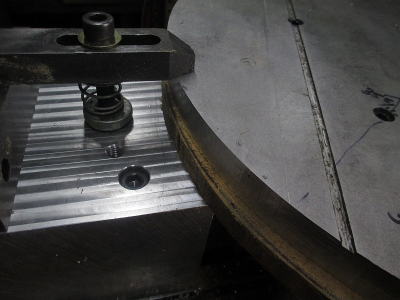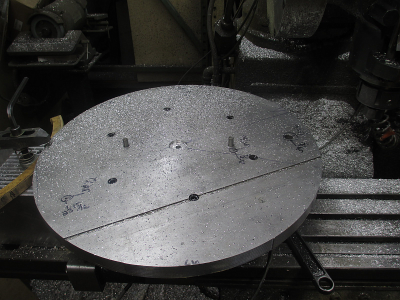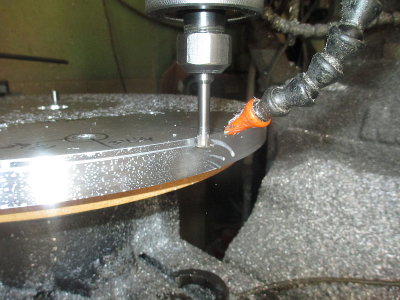Got the finish cut on the OD completed today. I had to use the RT as the feed, and 0.010'' stepover was about all the RT would take at a 35 IPM feed speed. It's a little tricky to calculate the feed speed on the OD of a circle and try to relate that to IPM. Fortunately I have a Shimpo handheld tach and it is scalable in many different units, including IPM using the linear speed wheel. So just played with the feed until I and the machine were happy.
I hand wrote a program to make the finish cut because I am not about to pay Fusion for their 4th axis (used to be included at no extra charge) addin that I might use once a year. It was a simple program, about 10 lines of G code. Create a helix toolpath by moving Z down in relation to the rotation.
G1 Z-1.020 A-2160.0 F10. (While Z feeds down from 0.05 to -1.020'', rotate the RT -2160 deg (6 full rotations), feed 10 IPM)
This gives about 0.250 step down per rotation in a nice smooth helix. I had to make 4 passes because I left 0.040 for cleanup from the roughing cut. Came out great.

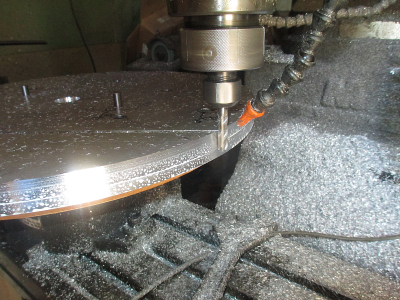
For the next operation it's even more fun, the poly-V pulley grooves in the just finished OD. These grooves are J profile, so about 0.093 deep.
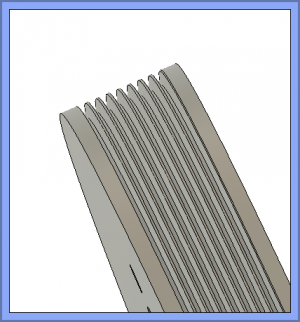
Required a special cutter because the V's are 40° I was able to locate one at Harvey Tool.
https://www.harveytool.com/products/tool-details-967510
Spindly looking tool I hope it survives.

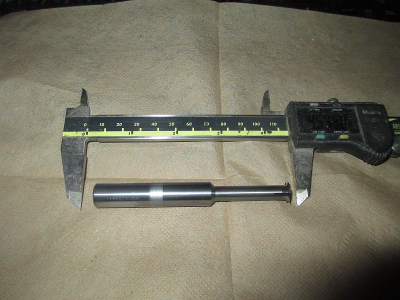
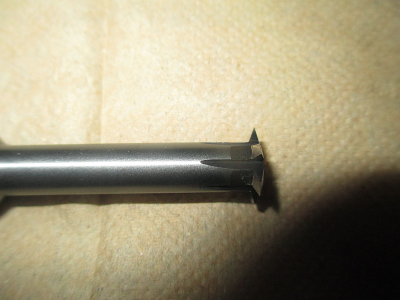
Again I had to hand write the G code for this operation, but this is a simple one also.
The code below is written to do only one pass per groove. I may chicken out and do them in two passes.
 G0 X10.157 Y-1.850 Z0.6
G0 X10.157 Y-1.850 Z0.6 (Set X, Y, & Z to the start position)
G0 Z-0.212 (Move Z down to the first groove height)
G1 Y0.0 A90.0 F10. (Lead into the work)
G1 A450.0 F10. (Rotate one revolution)
G1 Y1.850 A540.0 F10. (Lead out of the work)
G0 Z0.6 (Raise Z 0.6'' above work)
G0 X10.157 Y-1.850 A0.0 (Reset position to start )
Rinse/repeat for all 8 grooves.
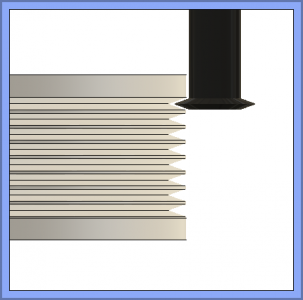
All of this would be easy if I had a 20''+ swing lathe. But we use what we have and just figure out how to make it work. Machining is just solving a series of problems to achieve a desired outcome.


